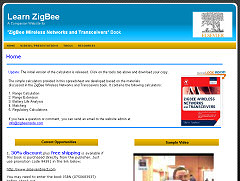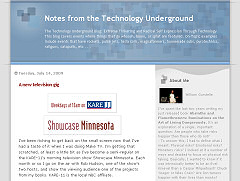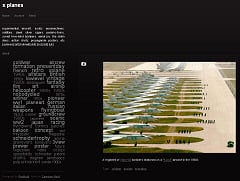 1. ZigBee Networking Site
1. ZigBee Networking Site
The Learn ZigBee Web site is a companion to the book described in the New to Bookshelves section below. Here are collected videos about ZigBee wireless networking; online calculators for range, range extension, battery-life analysis, matching, and regulatory calculations; and a collection of papers and articles covering hardware topics (antennas, battery considerations and power-saving approaches, standards, and applications). You can also post questions or comments.
 2. Eclectic Technology Blog
2. Eclectic Technology Blog
Bill Gurstelle writes very interesting books if you happen to have a penchant for, say, building your own catapults or finding other ways to hurl projectiles and make things go boom. But his blog, Notes from the Technology Underground, ranges more widely, ruminating on why engineers aren't famous, or discussing risk taking and decision making, or talking about really big potato guns. It's fun, engaging, interesting, and I think I need to buy all his books.
 3. Experimental Aircraft Blog
3. Experimental Aircraft Blog
If you're an airplane buff or a sucker for photos of weird and wonderful aircraft, then take a trip over to X Planes. The blog collects images of aircraft old and new, experimental or not, in addition to concept drawings and avionic fantasies. It's worth a visit purely for the visuals, but clicking on the image will take you to the source of the image and more information.
New to Bookshelves
 ZigBee Wireless Networks and Transceivers
ZigBee Wireless Networks and Transceivers
Author: Shahin Farahani
Publisher: Newnes, an imprint of Elsevier
ISBN: 978-0-7506-8393-7
Page count: 339
This book provides a soup to nuts review of low-power, short-range, low-data-rate wireless networking using the ZigBee and IEEE 802.15.4 standards and is intended for a broad audience that includes wireless system designers, middleware designers, end-product OEM developers, and anyone else who hungers to understand ZigBee networks and wants to implement them successfully. It is designed as a course for self-learning and is supported by a companion Web site, www.LearnZigBee.com, reviewed earlier. The book is divided into nine chapters with five appendices.
Chapter 1 covers ZigBee basics and Chapter 2 gives brief ZigBee/IEEE 802.15.4 networking examples. The next chapters delve more deeply into the topics covered in the first two chapters. Chapter 3 explains ZigBee and IEEE 802.15.4 protocol layers, Chapter 4 discusses transceiver requirements, and Chapter 5 talks about RF propagation, antennas, and regulatory requirements. Chapter 6 covers battery life analysis, Chapter 7 explains location estimation methods, Chapter 8 deals with ZigBee coexistence with other wireless devices and devices that emit RF (microwaves and cordless phones). Chapter 9 is devoted to discussion of related technologies: IPv6 over IEEE 802.15.4 (6LoWPAN), WirelessHART, Z-Wave, ultra-low-power Bluetooth (Wibree), and TinyOS. The Appendices include PSSS code tables, ZigBee device profile services, DSSS symbol-to-chip mapping tables, ZigBee Pro/2007, and transceiver building blocks.
Rich in illustrations and written in a clear and readable style, this book presents an excellent comprehensive reference for those who want to learn more about this wireless networking technology.